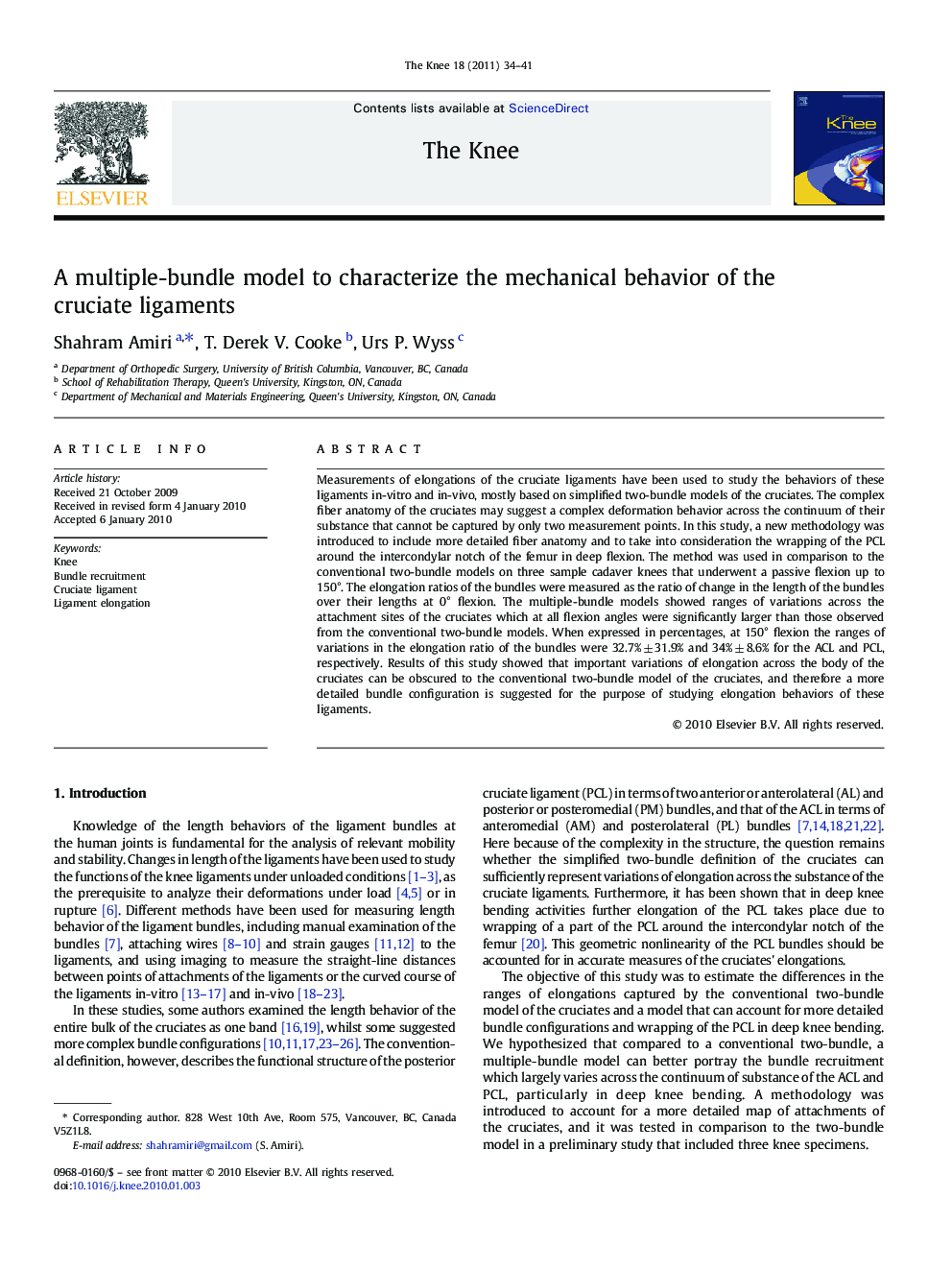| Article ID | Journal | Published Year | Pages | File Type |
|---|---|---|---|---|
| 4077822 | The Knee | 2011 | 8 Pages |
Measurements of elongations of the cruciate ligaments have been used to study the behaviors of these ligaments in-vitro and in-vivo, mostly based on simplified two-bundle models of the cruciates. The complex fiber anatomy of the cruciates may suggest a complex deformation behavior across the continuum of their substance that cannot be captured by only two measurement points. In this study, a new methodology was introduced to include more detailed fiber anatomy and to take into consideration the wrapping of the PCL around the intercondylar notch of the femur in deep flexion. The method was used in comparison to the conventional two-bundle models on three sample cadaver knees that underwent a passive flexion up to 150°. The elongation ratios of the bundles were measured as the ratio of change in the length of the bundles over their lengths at 0° flexion. The multiple-bundle models showed ranges of variations across the attachment sites of the cruciates which at all flexion angles were significantly larger than those observed from the conventional two-bundle models. When expressed in percentages, at 150° flexion the ranges of variations in the elongation ratio of the bundles were 32.7% ± 31.9% and 34% ± 8.6% for the ACL and PCL, respectively. Results of this study showed that important variations of elongation across the body of the cruciates can be obscured to the conventional two-bundle model of the cruciates, and therefore a more detailed bundle configuration is suggested for the purpose of studying elongation behaviors of these ligaments.
